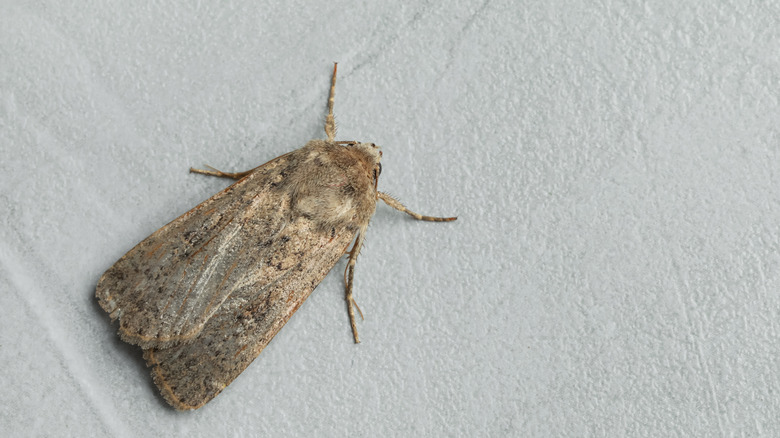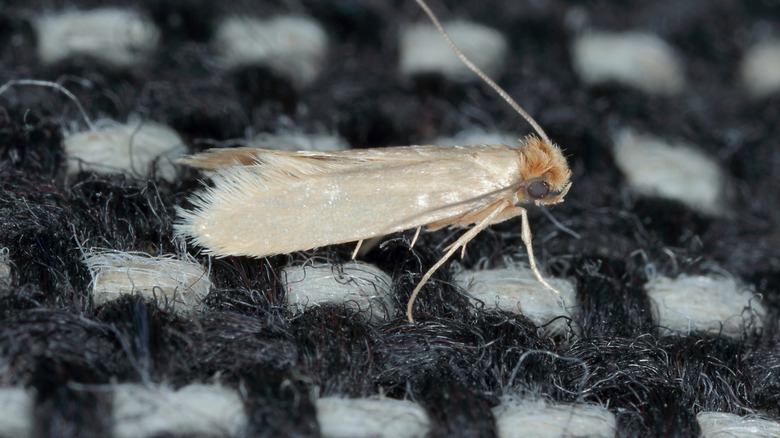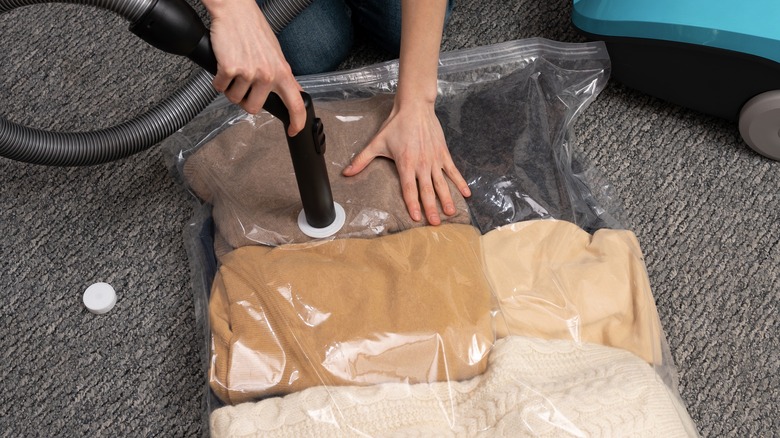Telltale Signs Moths Have Gotten To Your Belongings
Have you ever noticed tiny holes in your favorite sweaters or mysterious bite marks on your wool scarves? Well, congratulations, you might have unwittingly welcomed moths into your wardrobe! These sneaky little critters are fashion's silent saboteurs, leaving behind subtle but telltale signs of their mischief.
Since moths can be so destructive in your closet, it's essential to be cognizant of the warning signs that you may be harboring these fluttering foes. First, keep an eye out for irregular holes in your clothes, especially in natural fibers like wool, furs, or silk. Moths are basically tiny textile terrors, munching away at your garments with unparalleled precision. If you spot small, sand-like particles in your closet or dresser drawers, it's not a secret stash of beach memories but likely moth larvae, voraciously devouring your favorite fabrics.
Another giveaway is the presence of silky webbing — the result of moth larvae spinning their ruinous magic. In fact, it's not even the adult moths who do the most damage to your clothing. After the larvae hatch, the tiny caterpillars that emerge are the ones who feast on your wardrobe before developing cocoons and metamorphosing into harmless moths that are easiest to spot. Don't be fooled though, without the telltale signs of damaged clothing, the presence of moths does not necessarily mean your closet is in trouble. Only two species actually feed on clothes. Nevertheless, if your closet starts to resemble a battleground of shredded fibers, it's time to declare war on the moths.
How to banish a moth infestation
So, you've found yourself in the middle of a clothing moth invasion — not exactly the fashion statement you aimed for. While you may have lost some precious pieces from your wardrobe, it's not too late to salvage what's left. First off, you'll want to utilize a vacuum to suck up those moth larvae, their silky webs, and any other debris that might be hiding in the nooks and crannies of your closet. Be sure to check all the nooks and crevices, as moths tend to lurk in these spaces. Another good idea is to steam your carpet to kill any larvae that may be hiding there. Give your entire closet a thorough wipe-down as well.
Next, dry clean any sensitive fabrics, such as fur, silk, or feathers. These fabrics should not be washed in your washing machine as they may be damaged in the process. Any items that do not require dry cleaning and are safe to put in the dryer should be washed and dried, reaching a temperature of 120 degrees Fahrenheit, in order to kill any caterpillars or larvae.
Finally, if you have fabrics that cannot be put in the dryer and aren't quite worthy of dry cleaning, you can package them in sealable plastic bags and pop them in the freezer. You'll need to leave them in there for at least 72 hours in order to kill the moths. Too short, and the insects will hibernate.
How to prevent moths in the future
Let's talk about mothproofing your clothing because no one wants their favorite sweater turning into a snack for these winged mischief-makers. First, invest in some serious storage swag. Zip-up garment bags are a great way to keep your clothes safe and sound, making it much harder for those moths to find your fabrics. Toss in some cedar blocks or lavender sachets for good measure, as moths detest these scents, and your clothes will thank you for the aromatic upgrade. Be sure to replace them as the scents fade.
Another strategy for keeping moths out of your closet is to keep your clothes clean. Don't put worn clothes back in your closet, as moths are attracted to dirt and oils rather than the potent aromatics of clean clothes. Instead, place your dirty clothes in a sealed hamper before dry cleaning or washing them thoroughly. It may even be wise to store your hamper in a clean room like a bathroom rather than in your closet near the rest of your vulnerable wardrobe.
Last but not least, embrace the power of regular decluttering. Moths thrive in neglected, overstuffed spaces. So, channel your inner Marie Kondo and declutter that closet regularly. Donate what you don't need, toss out what's beyond repair, and vacuum regularly to capture any potential larvae lurking in your carpets. A clutter-free closet is far less likely to be infested than one with untouched, unworn clothing, as moths don't like to be disturbed.


